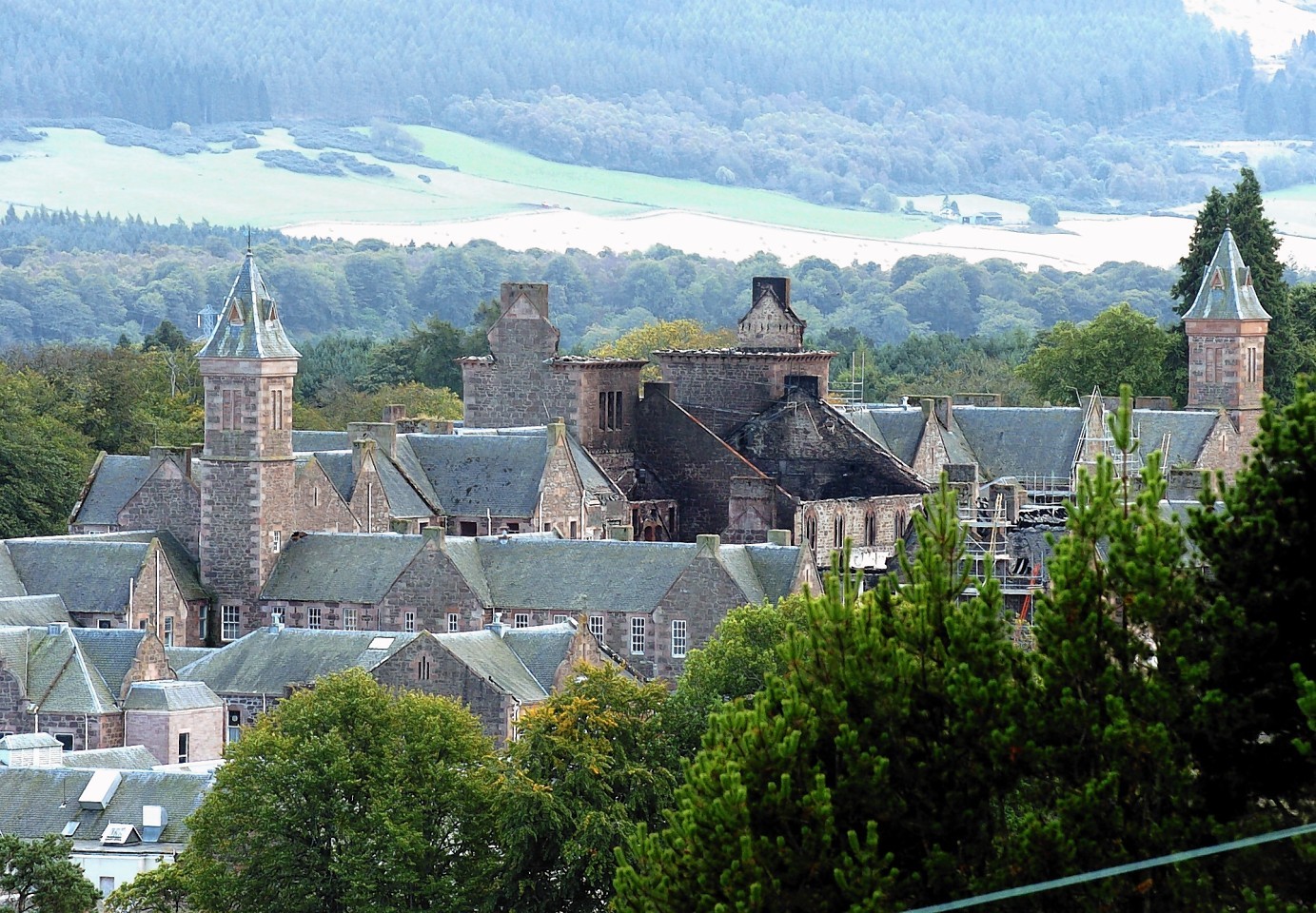Community leaders in Inverness have reacted with dismay after a developer abandoned plans to restore the heart of a fire-ravaged city landmark.
Robertson Homes has scrapped proposals which would have brought the central section of the former Craig Dunain psychiatric hospital back to life.
One civic chief claimed last night that the revised plans would “destroy” the historic character of the 1864-built B-listed building.
But the developer insisted it was not “economically viable” to restore the entire property – and highlighted the “significant amount of investment” going into the overall scheme.
Next week, councillors will consider whether to grant listed building consent for the key phase of the redevelopment, transforming part of it into 30 flats, 24 townhouses and two terraced homes.
However, there is concern that it is no longer proposed to restore the fire-damaged central area of the building, which housed the hospital’s former chapel until it was destroyed by a blaze in September 2007.
The fire forced a rethink on plans to convert the site into 181 apartments, with Robertson Homes previously applying to develop 32 units in the west wing as its first phase, 12 of which have been completed and are now occupied.
In total, the scaled-down proposals would now involve the construction of 68 flats within the former hospital, but the rear walls and roof of the central section would not be rebuilt.
Instead, Robertson Homes would remove what remains of the rear wall, infill the basement and create a courtyard, although part of the chapel facade would be retained.
The developer yesterday released the first image of how the building would look if councillors approve the £13million scheme, which is expected to create 100 jobs.
Planning officials are urging councillors to back the project and say in a report: “The fire is now part of the history of this building too and, in this regard, the decision not to rebuild the chapel could be considered an honest response to that unfortunate event.
“If nothing else, it needs to be considered as a necessary compromise to ensure that the future of the building is secure.”
But George Hawco, chairman of Inverness West Community Council, said the redesign was not acceptable.
“Local people are concerned, and there’s a lot of wider concerns in Inverness, that the overall appearance of the building is being destroyed,” he said.
“The central section had quite distinctive architecture and really marked it out as an important, prominent building in Inverness. It was quite striking.
“With the central section gone, it takes away all the character from it.
“The overall shape and appearance of the building should be maintained. It’s such an important, historic building.”
John West, vice-chairman of Lochardil and Drummond Community Council, also said that some of its members have “expressed disappointment” with the redesign.
Historic Scotland has not objected to the plans, however, saying that although it noted that the tall pyramidal roofs on the central towers were “key features of the building’s character”, it recognised “the need to halt the decline of the building as soon as possible”.
Robertson Homes managing director, John Murphy, said: “From our point of view it came down to the economic viability of how much we could restore. The fire damage created a lot of issues.
“There’s a significant amount of investment going into the restoration of the building.
“Previously it was an institutional, hospital use. We’re trying to restore the building for residential use, which is a very different use and has different requirements.
“We know there are concerns and we’re trying to work with the community council and the planners. It’s about trying to reach a compromise.”
Stewart Nicol, chief executive of Inverness Chamber of Commerce, said: “It is great news to hear it will finally be restored after years of lying derelict but full of potential just a stone’s throw from the city centre.
“After many years of a slow housing market and a lack of jobs in the construction sector we are starting to see major projects get underway, which I believe shows a real confidence in Inverness and the surrounding area as well as a boost to local businesses.”
